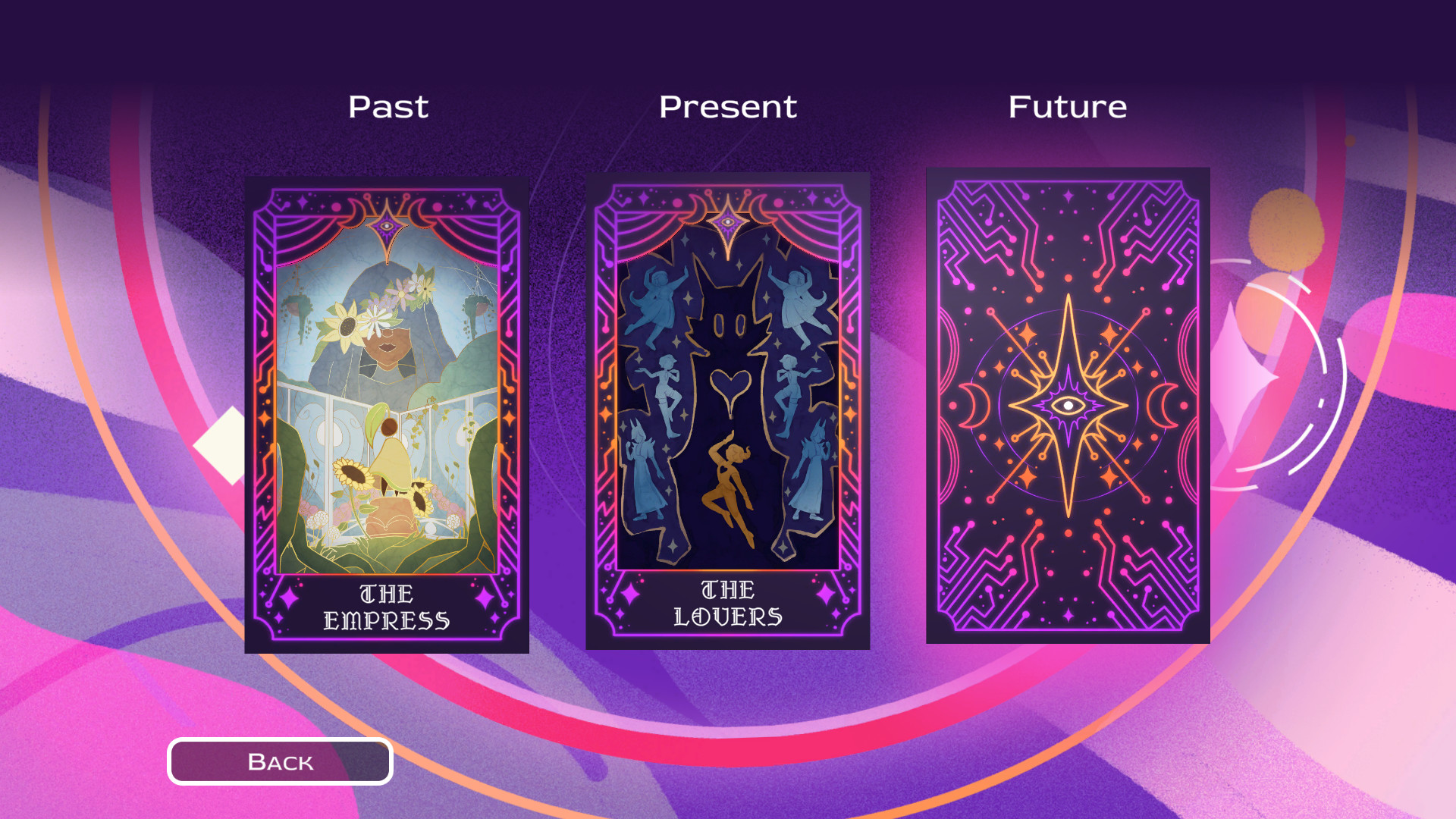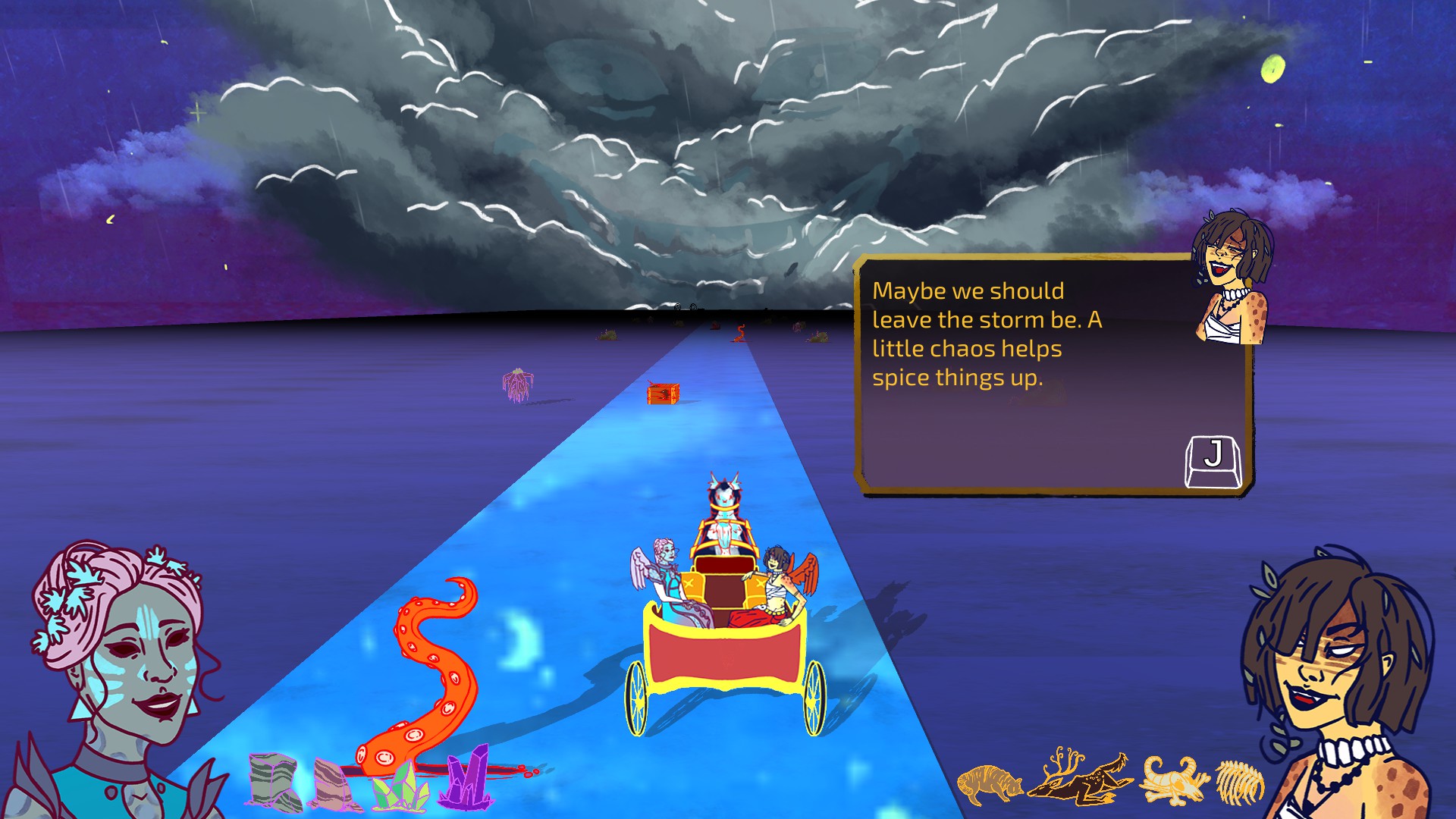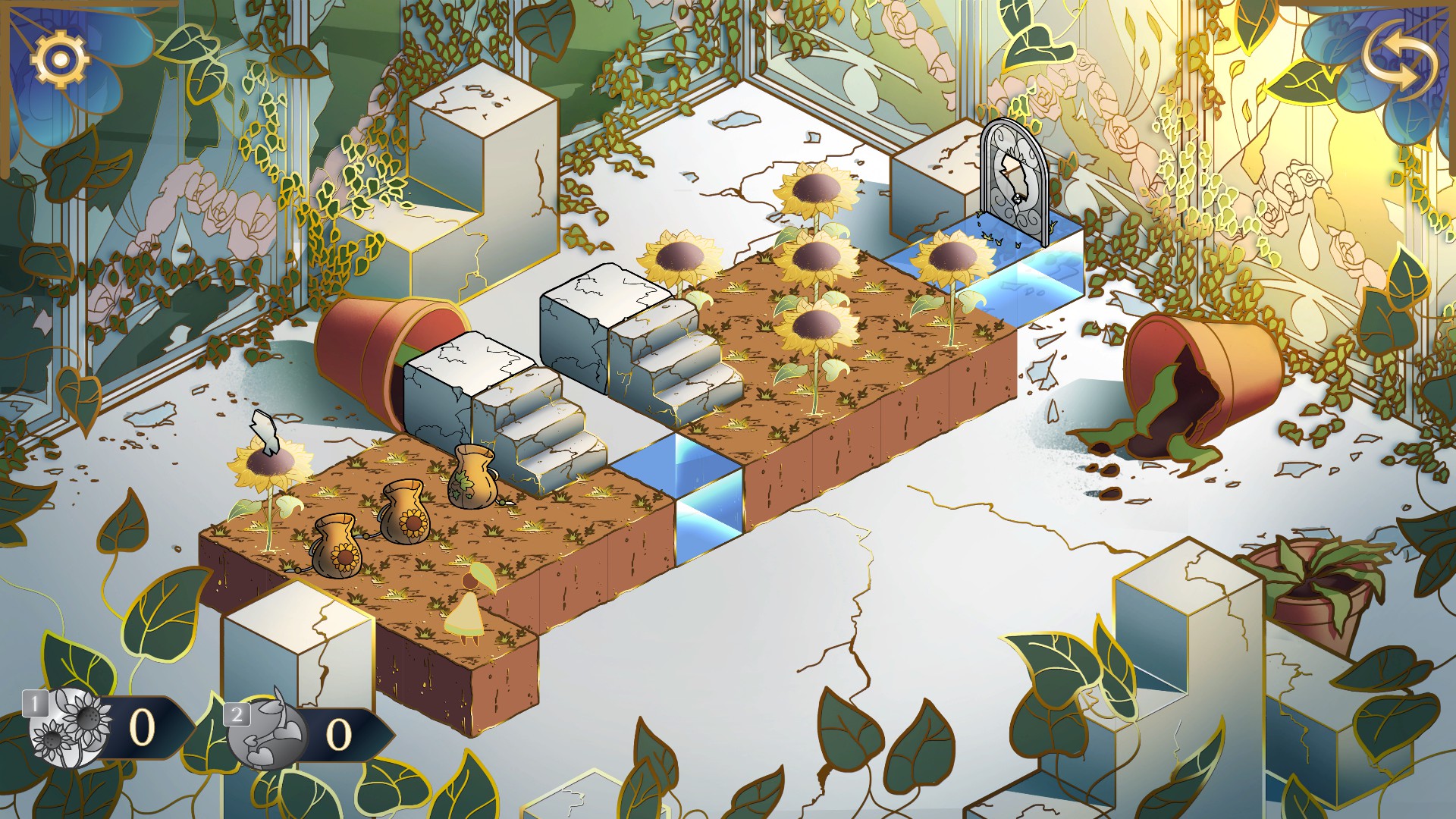Read your future with 22 videogame interpretations of the Tarot
Cartomancy Anthology weaves a brilliant indie compilation around fortune-telling.

If you've ever come across the Tarot, it's probably as a means of telling the future. A cousin of modern playing cards that dates back to the 15th century, the Tarot consists of four suites of numbered Minor Arcana cards and a Major Arcana of trumps depicting archetypal characters and concepts, such as Death or the Empress. Each card is dense with possible interpretations that can be hypnotic to unravel, even if you don't take the divination thing seriously. Videogame developers among other artmakers have seized upon the Tarot as both a motif and a creative tool: Tarot-esque designs appear in fantasy RPGs like Dragon Age: Inquisition, and studios like Ice Water Games use them as a source of quickfire inspiration.
A common Tarot fortune-telling method is to draw three cards and use them to explore answers to a question, like “will there ever be a proper Legacy of Kain revival”. This is also how you'll unlock games in Cartomancy, a full-blown indie collection of 22 games from different developers based on the Major Arcana, out later today. Rather than picking from a menu, you play amateur mystic in order to access its games at random. I’ve spent the weekend doing just that. Rather than a straight review of Cartomancy, I’ve put together a little three card spread of my own in response to the question: “what’s the effect of structuring a videogame compilation like an occult instrument?”
Let’s start with the Chariot, a card associated with the overcoming of indecision and the reconciling of clashing views, represented by unruly horses. It's very much the draw you want if you’re about to drive the kids to Disneyland. In Cartomancy’s version, Ritualist Roadtrip, you steer an accelerating vehicle carrying two chatty ritualists down a highway towards an apocalyptic storm. To avert this storm, your passengers need you to collect materials for a spell enroute. Unhelpfully, their philosophies and methods are totally opposed.
One is a champion of order who wants you to gather crystals and glowing rocks; the other is a cackling hedgewitch who wants you to scoop up dead animals. The pair bicker continually over points of dogma as you hurtle towards the growing tempest, trying to acquire enough of each resource to keep their character portraits smiling. Their speech windows often block the view, and the keys to progress dialogue keep changing—worse still, you’ll be asked to take sides in the debate while keeping one eye on the road.
Rather than picking from a menu, you play amateur mystic in order to access its games at random.
Aside from being a delightful spin on the Chariot motif, this imaginatively self-sabotaging game sums up a project that feels like 70-odd developers pulling in all directions, with Tarot serving as the basis for more or less every videogame verb under the sun. Cartomancy is a gloriously uneven cut-and-paste job. Its component games include a scribbly fishing game, a Monument Valley-style isometric puzzler, a rhythm-matching 3D platformer, a visual novel with gardening elements, and a side-scroller that casts you as the Grim Reaper galloping through valleys of billowing shadow.
Game lengths range from less than a minute to a couple of hours. Aesthetics vary from cosy 3D solarpunk to overwritten photographs of pipes. Some games are a little buggy or typo-ridden, but all are thoughtful reworkings of an ancient story-telling apparatus. Tarot invites such a confusion of responses: part of the reason it has endured so long in popular culture is that each card’s symbolism and associations are at once incredibly over-defined and extremely flexible.
How you interpret Tarot cards in a three-card spread is shaped by which cards you draw them with: you might join them up into “past”, “present” and “future”, as Cartomancy’s front end invites you to, or treat them as entangled aspects of a single idea. Which brings me to my second card for this spread, the helpless yet strangely contemplative Hanged Man—at the mercy of dire events but also accepting of them, seeing the world from a fresh perspective.
Keep up to date with the most important stories and the best deals, as picked by the PC Gamer team.
Everything must go
In the corresponding Cartomancy game Thanks, Come Again, the Hanged Man has become a surreal dollop of body parts in a sort of mucky cosmic junk shop. Here, you’ll try to meet the demands of various dreadful clients by mashing together concepts such as “Journey” or “Gusto”, with more persuasive combinations earning you more cash. You can also trade away bits of your own anatomy to guarantee customer satisfaction, but there’s only so much of you to go around—though the game builds towards a queasy understanding that giving yourself away might be desirable. Feedback is minimal: you’ll know when you’ve picked well, but sometimes, a blend of concepts that makes sense to you will leave the patron unmoved.
Reminiscent of both Papers, Please and Golden Light, it’s an exploration of self-sacrifice and a brilliantly godawful exercise in free association. As such, it also parodies the act of chaining together Tarot cards into readings. Much as mixing “Violence” with “A patch of enclosed ground” probably won’t produce the requested “Tomorrows”, so some Tarot card combos may seem totally unfeasible. The Chariot and the Hanged Man aren’t a natural double act, for instance—one indicates taking control, the other losing it. How, then, should I read them together?
Perhaps the missing ingredient here is romance. Tonight, Together, Cartomancy's riff on the hopefully self-explanatory Lovers card, is my final pick for the spread and my favourite game in the collection, partly because it's my first decent club night in years. A laidback queer dating sim, the game takes place in a muted urban fantasyland reminiscent of Colestia’s A Bewitching Revolution. The evil Necromancer in charge of this world has just popped their clogs, and you're attending a hastily organised celebration party. Playing in first person, you wander the venue looking for folks to dance with.
The Tarot framing invites you to experience it in a more intriguing way—not as a collection, but a set of entwined routes through the subject matter
The presentation is at once muted and baroque: the world occupies a plastic Polly Pocket window in the screen's top half, with room-themed SFX playing out across the surrounding blackness. The dancing, meanwhile, takes place in top-down view: you move the mouse cursor along trails of collectibles left by your partner to fill a gauge. You aren’t punished for tracing your own patterns, however, and your partners are often just as hopeless—they’ll screw up their own moves and accidentally drop belongings for you to recover.
Rather than a dance-off, the vibe is of mortally tired people enjoying some basic bodily companionship in a world that remains gloomy and oppressive, in spite of the tyrant’s demise. The dancing is a kind of continual, friendly re-routing of the urge to “win” the dance—you’re asked to match a pattern and score points, but in reality, the aim is to have fun and build a bond. If the Chariot and the Hanged Man speak respectively to the way Tarot cards attract conflicting interpretations, and the almost gruesome variety of ways those interpretations can be spliced together, the Lovers card is the bedrock of community that keeps all that creative energy from yeeting itself into the abyss.
Or at least, that’s my reading—your cards and takeaways may differ. Cartomancy can be played and enjoyed as another eccentrically themed indie compilation, on par with Indiepocalypse and Dread XP, but I think the Tarot framing invites you to experience it in a more intriguing way—not as a collection, but a set of entwined routes through the subject matter, with games that are often pretty ambiguous in themselves signifying different things depending on how you arrange them.
If anything disappoints me about Cartomancy, it’s that the launcher doesn’t lean into this enough—having mastered the three-card spread, I wanted to know about more elaborate ways of organising and reading the cards, perhaps extending to Tarot’s own, somewhat forgotten history as an actual cardgame. Then again, the pleasure of Tarot is that it’s so open-ended. Too much direction would break the spell.





